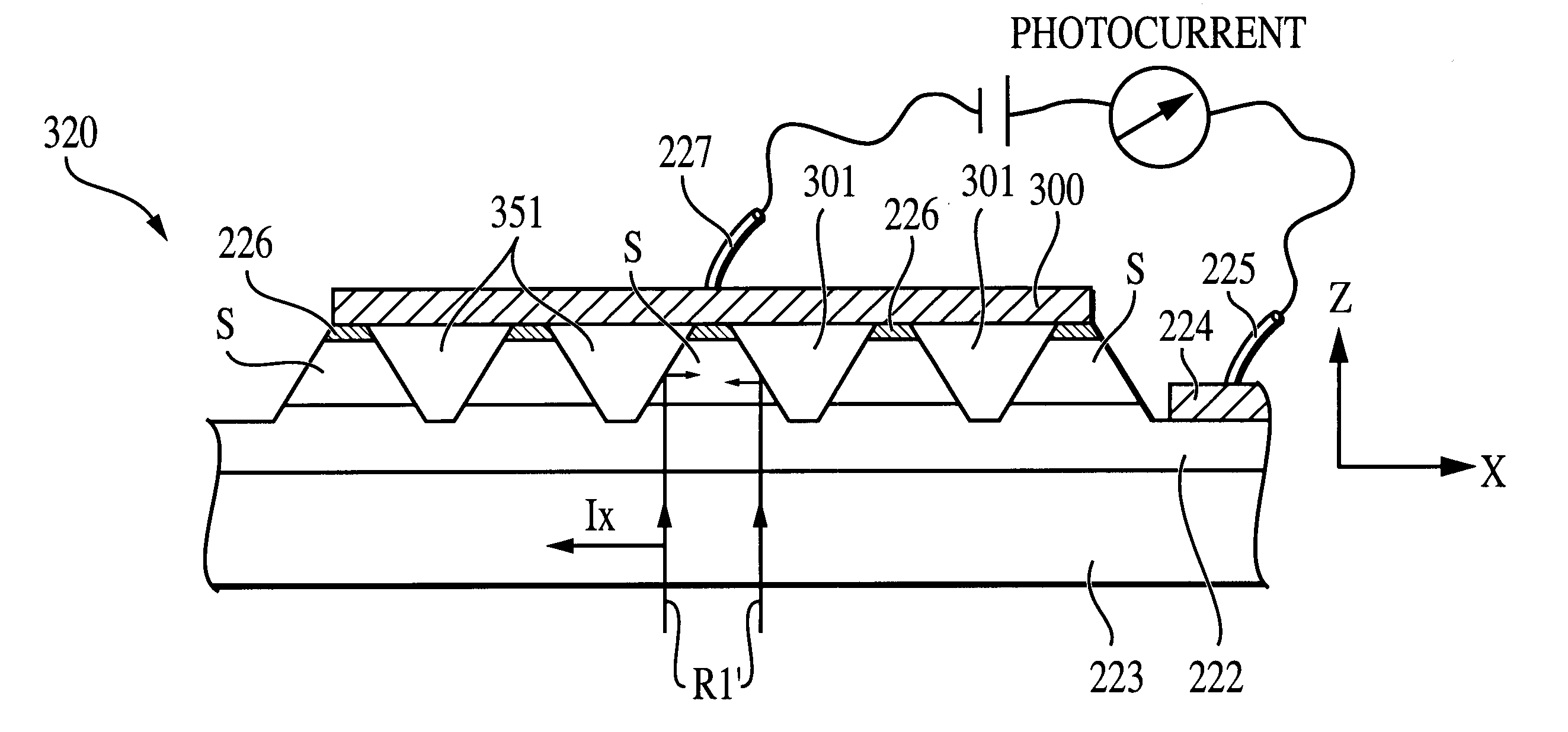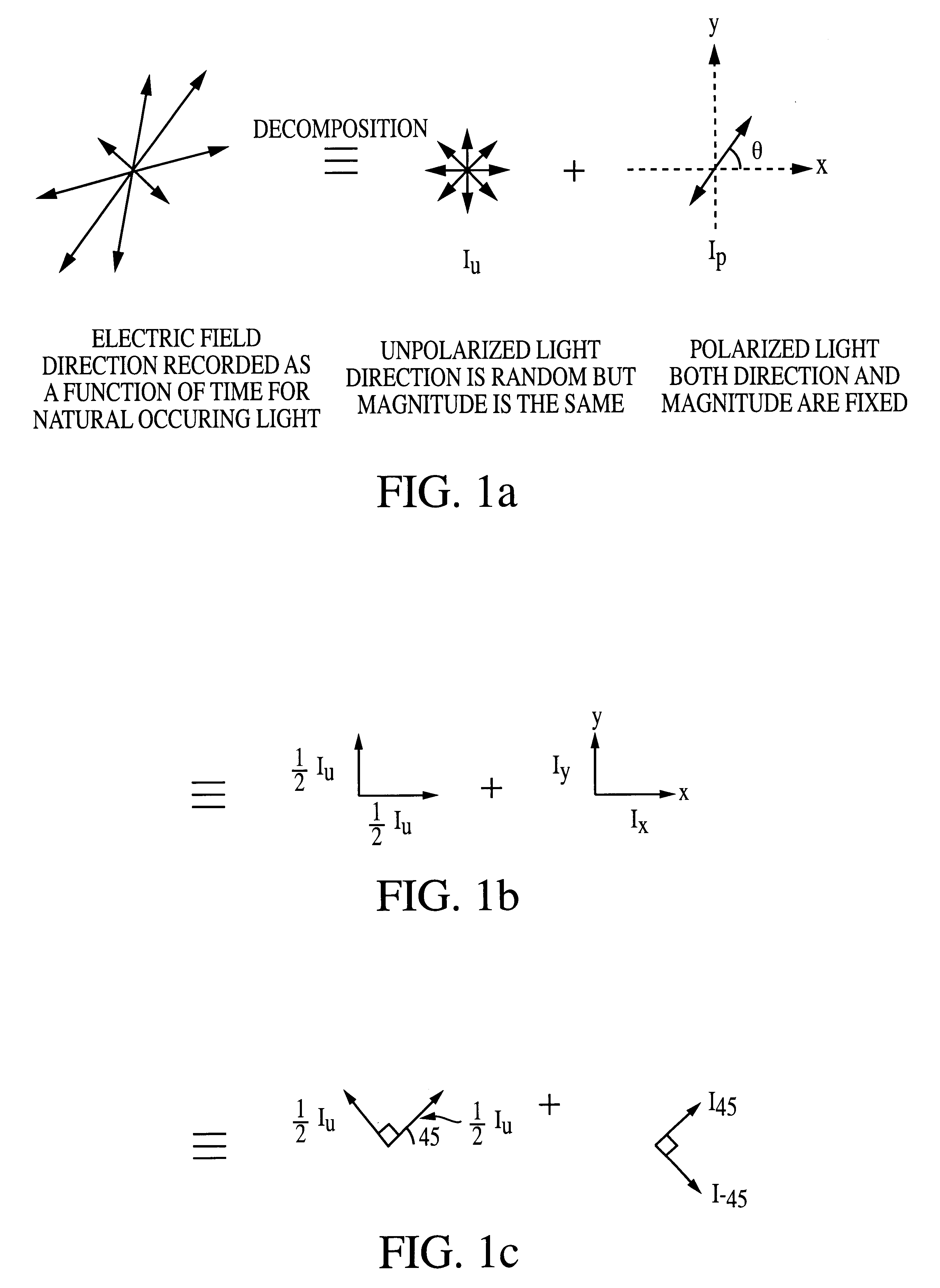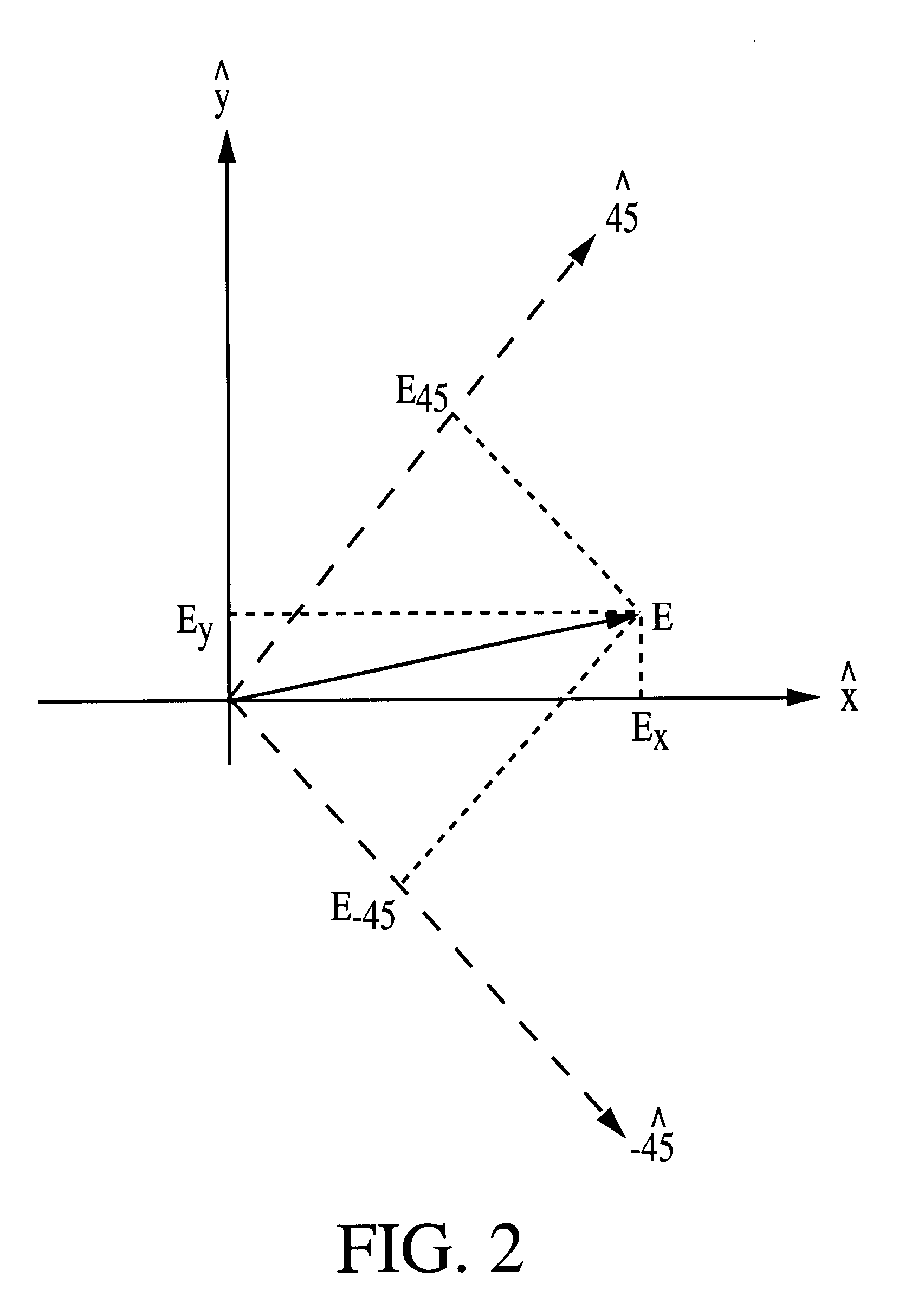Polarization-sensitive corrugated quantum well infrared photodetector array
a well infrared photodetector and corrugated technology, applied in the direction of optical radiation measurement, radiation controlled devices, instruments, etc., can solve the problems of grating coupling or corrugation, optical elements in such systems have to be displaced or rotated, and detection camera systems are more expensive to implemen
- Summary
- Abstract
- Description
- Claims
- Application Information
AI Technical Summary
Problems solved by technology
Method used
Image
Examples
first array embodiment
FIG. 5 shows a two-dimensional n.times.m array having detector units (cells), each unit (cell) consist of detector elements A, B, C and D. The number of detector cells is arbitrary. The photocurrent generated in each detector element is connected to an electronic circuit for independent signal readout. The photocurrents J.sub.A, J.sub.B, J.sub.C, and J.sub.D from each detector unit (cell) are determined by the polarization properties of a particular spot in an observed scene. From the values of J.sub.A, J.sub.B, J.sub.C, and J.sub.D, the intensity components I.sub.u, I.sub.x and I.sub.y and the orientation angle .theta. can be calculated using Eqns. (21) and (20), respectively. In a sensitive camera, it is desirable that R.sub.xA >>R.sub.yA, and R.sub.xB <<R.sub.yB, although such criteria need not necessary for operational use. Also, for Eqns (21) and (20) to be valid, these requirements must be satisfied:
R.sub.45C =R.sub.-45D, (22)
R.sub.-45C =R.sub.45D, (23)
and
R.sub.45C >R.sub.-45C...
second array embodiment
The second array embodiment of the invention is sensitive to both intensity and polarization characteristics of an observed scene.
In the first array 200A of the invention, there are four detector elements A, B, C and D in each detector unit 100A. With four detector elements, the state of polarization of light can be completely determined. On the other hand, for the purpose of object detection and recognition, there may not be need for complete information of the incident radiation upon the detector. For infrared detection, it is possible just to use two detectors in another form of a detector unit 100B for polarization-sensitive detection. With fewer detector elements in each unit, the resolution of a detector array can be doubled as shown in FIG. 9. The mathematical algorithm used can also be simplified.
In the following, we will use detectors A and B for illustration. Considering two objects, both emit radiation at the same intensity level. If the infrared detection is just based o...
PUM
 Login to View More
Login to View More Abstract
Description
Claims
Application Information
 Login to View More
Login to View More - R&D
- Intellectual Property
- Life Sciences
- Materials
- Tech Scout
- Unparalleled Data Quality
- Higher Quality Content
- 60% Fewer Hallucinations
Browse by: Latest US Patents, China's latest patents, Technical Efficacy Thesaurus, Application Domain, Technology Topic, Popular Technical Reports.
© 2025 PatSnap. All rights reserved.Legal|Privacy policy|Modern Slavery Act Transparency Statement|Sitemap|About US| Contact US: help@patsnap.com



